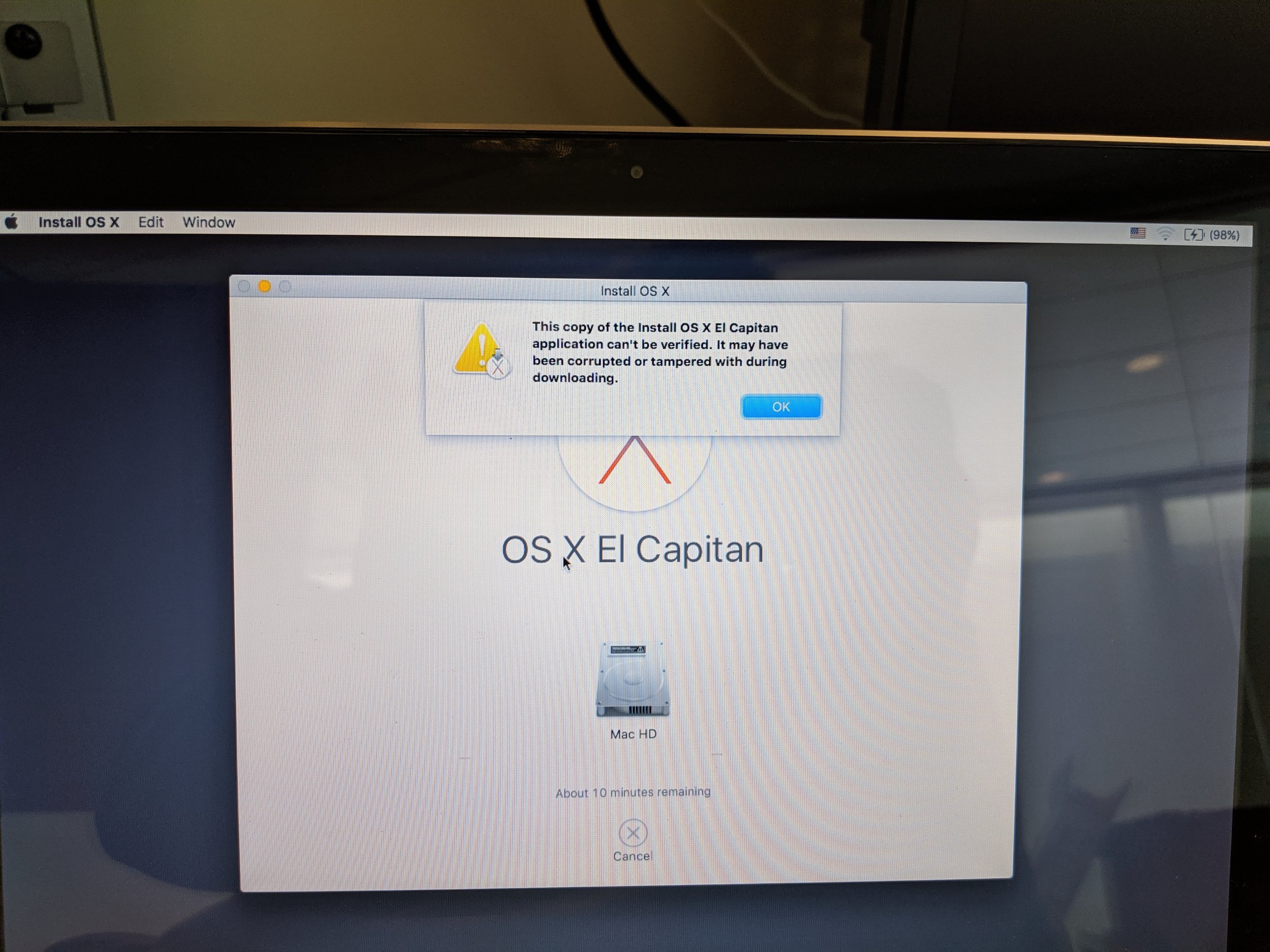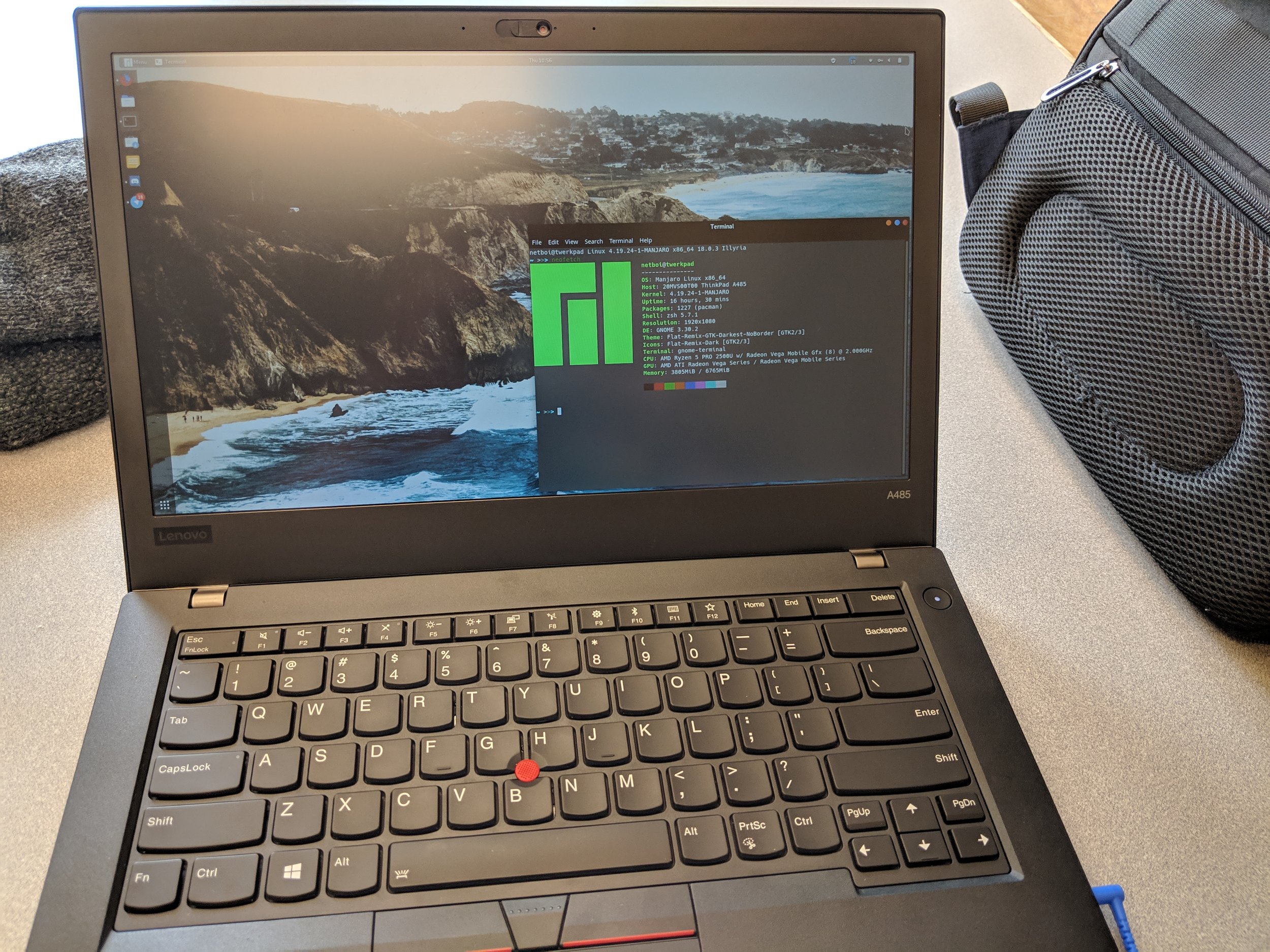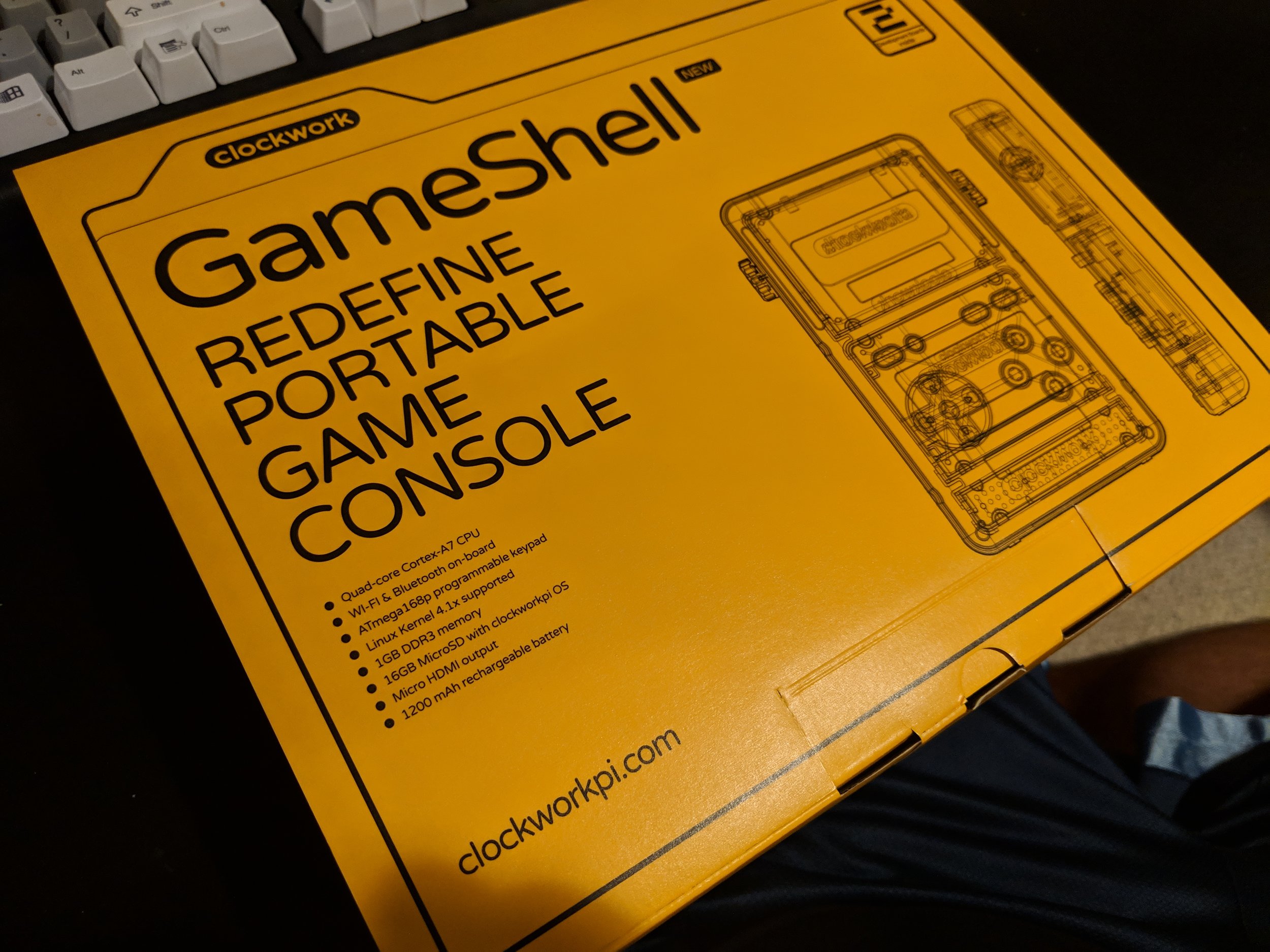Mac Linux project, Corebooting X230 etc!
/Hello once again! I’ve recently started working as a contractor at Salesforce in IT while I finish up my final online college classes. Nowadays I’m doing side projects at work and at home to keep my interest for hacking/modifying hardware up.
I learned the other day that, although prior owners can still download the OSX El Capitan install .app off the Mac App Store from “Purchases”, if you make an installable USB from the installer and plug it into the 2009 Macbook Pro 15”, it will come up with the above picture. This is quite odd- even though I had both unofficial AND official copies of the .app installer and made a flash drive with either after checking their sha’s, the 2009 would still refuse to have the OS installed, claiming it was faulty. Perhaps I’ll try something older on that one with DiskMaker or something since the terminal-based method wasn’t working.
The original goal behind getting a semi-recent build of OSX on that old macbook was merely to install rEFInd so I could then boot to a Linux flash drive and install some Debian-derivative distro on it. It was going to be the work laptop dedicated to troubleshooting drive issues, image cloning etc. Oh well, guess that’s on a backburner for a bit until I can figure out the new EFI through different methods.
In other news, my Thinkpad X230 that I left back in Ohio when moving across the country has been shipped back to me!
Once I’m less stressed about finding longer-term housing situations, I’ll definitely be corebooting this and throwing Debian on it to function as a stand-in portable Plex server etc.







